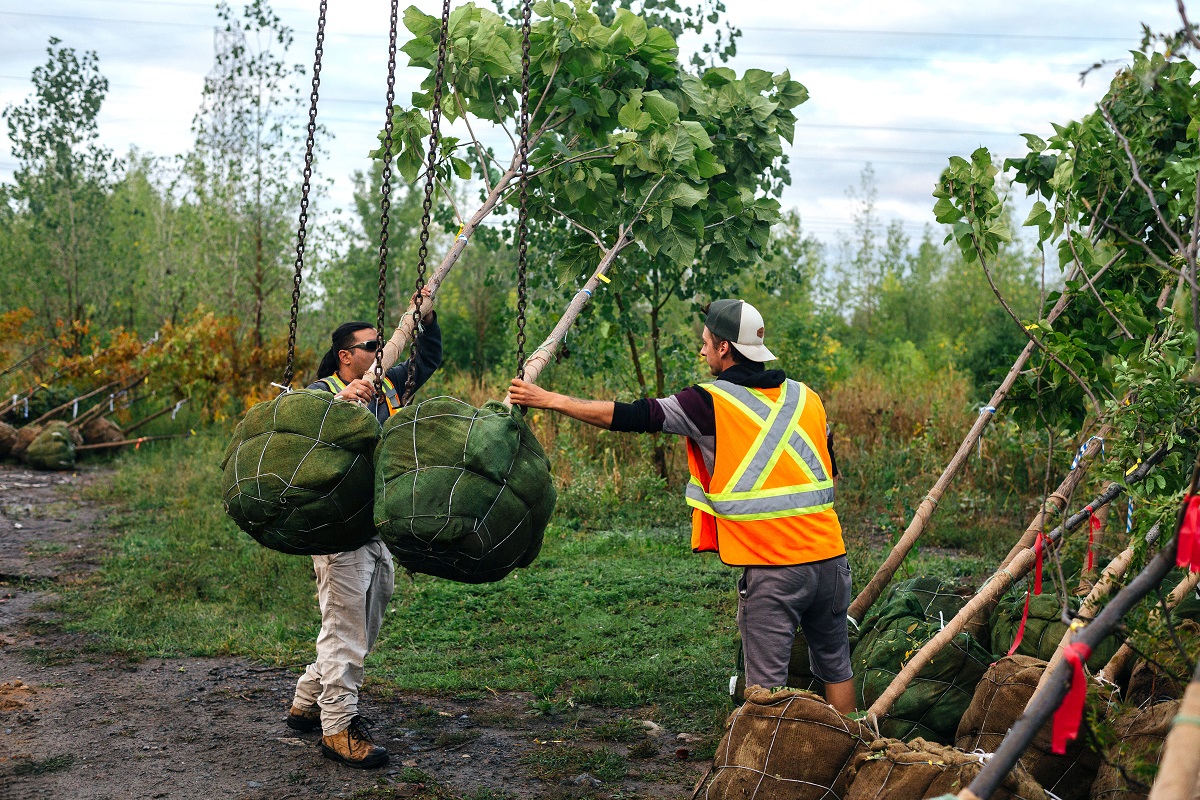The Year in Review: Landscaping Trends That Defined 2021

A year in review, and what a year it has been for the landscaping industry. 2021 began with a hefty dose of lingering uncertainty thanks to COVID. The last twelve months have been a roller coaster, from the highs of projects returning in full swing to the lows of plant and labor shortages. Before we close the year and look forward, let’s take a look back at some of the best and worst landscaping trends that defined the year 2021:
Political Changes and Their Impact on Landscaping Trends
No one is free from the influence of politics, and that includes the landscaping industry!
Let’s start with the 1.2 trillion dollar elephant in the room — The infrastructure bill. This bill is set to lead to more landscaping projects in cities all across America. Public Works can’t dig up roads and build bridges without landscaping designers coming in to deliver the final touch to beautify and maintain the green spaces.
Furthermore, this bill dedicates $47 billion to protect infrastructure from climate change. Landscaping businesses and architects are in the best position to offer planting solutions that combat environmental issues.
The Canadian government is also making moves, as it remains committed to allocating $3.2 billion over the next 10 years towards tree planting.
Government decisions also righted a wrong for us this year. Temporary labor visas had been on hold during the height of the pandemic. As restrictions eased, roughly 22,000 temporary worker visas were granted to immigrant workers. The landscaping labor shortage is a hot topic in the industry. Countless landscaping businesses rely on these visas to alleviate the labor shortage for their busy summer months.
Extreme Weather Rocked North American Landscaping Companies
Not all landscaping trends were celebrated. Whether it was the freeze in Texas, British Columbia’s heat waves, or Hurricane Ida, Mother Nature really challenged the landscaping industry in North America.
Landscaping businesses across the continent learned to change plans at a moment’s notice. The extreme weather reminded us to be more organized and build a backup plan. Consequently, many of us now make sure to have emergency procedures in place for the safety of our inventory, our staff, and our drivers.
Although the situation was dire for many of us, landscapers are as hardy as the dandelions we’re always fighting off from our green spaces!
Sustainable Landscaping Design and Native Plant Demand Grows
Some good news : The industry’s love affair with native plants continues to grow with every passing year. The undeniable trend at events in 2021 was sustainability and using native plants to fight climate change.
Additionally, landscaping design trends this year included governments pushing to increase urban canopy areas. This boosted demand for plant materials, specifically caliper trees, to an unprecedented level.
Urban green spaces do more than increase property values. They reduce pollution levels and lessen the intensity of heatwaves. We experienced the negatives of climate change first hand. We may as well profit off of the solution!
On that note, mono-culture is out and poly-culture is in. Sustainable landscaping isn’t just about the plants. We’re including soil health in our focus this year.
Landscaping Plant and Labor Shortages Cloud the Industry
You’ve figured out by now that we can’t remind you of the good news without alternating back to the not so good news. Namely, the plant and labor shortages.
The year started with plant shortages driven by a number of factors highlighted in the 2021 Plant Shortage Report. Covid restrictions meant fewer employees could work in greenhouses to maintain plug material. Then the Texas freeze came along and exacerbated the shortages by further reducing the amount of plant material in the market.
The landscaping labor shortage crisis is old news. Yes, resuming temporary worker visas helped, however the industry needs more hands than are currently available. Previously postponed landscaping jobs were rescheduled to this year, but businesses still struggled to find people to join their teams.
While Covid distancing measures are no longer directing how many employees can be in a workspace, labour shortages persist. As a result, supply chain issues will remain. We’re not out of the woods yet!
The Year of Mergers & Acquisitions
M&A activity came back with gusto, almost doubling compared to last year! The landscaping industry saw some momentum build towards aggregation, with smaller nurseries merging or getting acquired by bigger players.
Some of the biggest names joined forces — Aspire, who was acquired by Service Titan, partnered with SiteOne, and LMN acquired landscaping training software company Greenius. Time will tell what effect these mergers will have on the industry as a whole. If nothing else, it’s a thrill to be at the forefront of big changes.
COVID Vaccination Resumed Some Activity
The pandemic is far from over, yet the situation is greatly improved compared to the nightmare that was 2020. The greatest highlight after a year of uncertainty and isolation : Landscaping Industry Events are back!
Vaccination rates went up, restrictions went down, and finally, the industry came together again. Multiple landscaping industry event favourites such as the GIE expo, and the L&L Tech Conference were back again, offering much needed face-to-face interaction.
2021 was like much-needed rain after a drought. The landscaping trends that defined the year were mostly positive, with some big challenges persisting nonetheless. The road ahead may still be full of obstacles, but we’ve overcome a lot as an industry. Here’s to a better 2022, and to paving the way for the post-pandemic era for landscaping!

